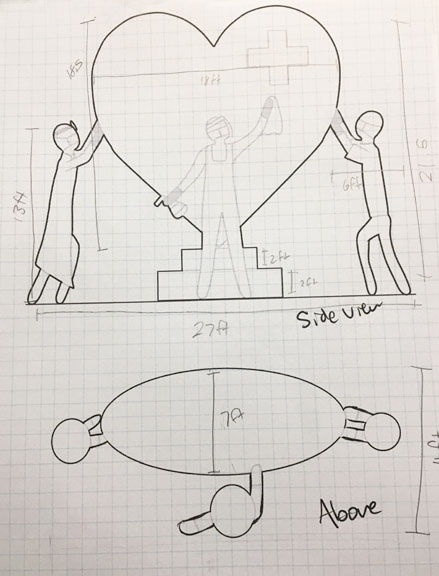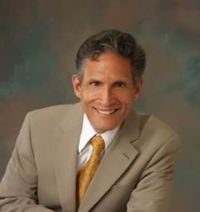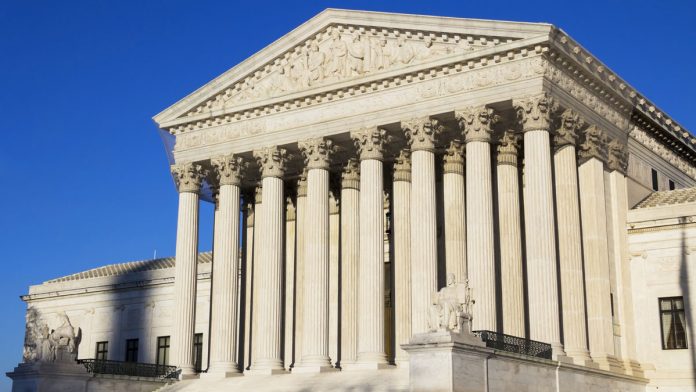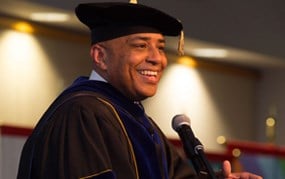https://www.vanderburghsheriff.com/jail-recent-booking-records.aspx
“IS IT TRUE” MAY 14, 2020
IS IT TRUE that the Evansville Region Representative of the United States Senator Mike Braun is doing a credible job? Â …Steven W. Hammer is working day and night carrying the message that the United States Senator from Indiana Mike Braun is a man of his word by following through with his campaign promises? Â …we give five (5) cheers to Steve Hammer for doing a credible job for the United States Senator Mike Braun?
IS IT TRUE our “READERS POLLS†are non-scientific but trendy?
WHEN RED STATES ACT BLUE
WHEN RED STATES ACT BLUE
    By Richard Moss, MD
MAAY 11, 2020
My state folded. The people didn’t fail; our government did. Specifically, our governor. Indiana is a red, Republican state with two Republican US Senators, seven (out of nine) Republican Congressman, a Republican State House, and Senate, and, ostensibly, a Republican governor. Governor Eric Holcomb is his name. With Republicans like him who needs Democrats.Â
Holcomb won the governor’s seat by a series of unlikely events. He had never before won elected office. A state GOP apparatchik, he was a behind the scenes character. He had run for the Senate in 2016 against two Republican congressmen, Marlin Stutzman and Todd Young. Unable to compete politically or financially, the lackluster Holcomb quickly withdrew. Â
But then lightning struck. Â
When Mike Pence’s lieutenant governor, Sue Ellspermann, left the ticket in 2016 to head Ivy Tech, then-governor Mike Pence tagged Holcomb to be his running mate. Donald Trump then tapped Pence for the Vice-Presidential slot. This opened the door for Holcomb to ride the Trump/Pence coattails to the governorship of Indiana.
Holcomb has since dealt with the Covid 19 pandemic like any Democrat governor would. Only he is not a Democrat, and Indiana is not a Democrat state. Â
On March 23, 2020, Holcomb announced a stay-at-home order through April 7, subsequently extended to May 1. The arguments against a draconian, one-size-fits-all, statewide lockdown are many.
 Selective, targeted, or more “surgical†interdiction, as Dr. David Katz referred to it in a widely read Op-Ed on March 20, 2020, in, of all places, the New York Times, makes sense in light of the growing knowledge of the at-risk, vulnerable populations. These are the elderly and infirm who should be quarantined for their own protection. The risk of dying from COVID for the young and healthy approaches zero. Why engage in “diffuse hostilities†or “carpet bombing†with significant “collateral damage†when a more precise, “surgical†approach would suffice? Selective quarantining of vulnerable populations, such as are found in nursing homes, assisted living facilities, and hospice makes sense. Closing schools full of young, healthy children does not.
Among many absurdities in the Holcomb, a shutdown was a halt of so-called “non-essential†or “elective†surgery, a misleading term that suggested interventions along the lines of breast implants or facelifts and not medically necessary, albeit non-emergent, procedures. These would include diagnostic studies, biopsies, cancer resections, gall bladder surgery, hernia repair, pediatric, neurosurgical, orthopedic, and cardiac procedures, chemotherapy, radiation, and treatment of brain aneurysms. These are medically necessary, yet Holcomb foolishly grouped them into the fictitious category of “elective†surgery. We have heard nothing about the number of patients who have died because of the non-treatment of life-threatening non-COVID medical conditions.Â
Holcomb and other governors introduced the notion of “essential businesses†versus “non-essential†businesses as if they could make such an arbitrary distinction. All companies are essential to their owners, employees, customers, and suppliers. In doing so, many businesses had to close, some likely never to reopen.
Consider the devastation of not the pandemic, but rather our reaction to it, to the economy, healthcare system, supply lines, schools, tens of thousands of shuttered businesses, and tens of millions of unemployed Americans, a horrible self-inflicted wound. How has it come that Indiana, a very red state, would have followed the same failed policies of deep blue states? Particularly when there are eight states that did not issue blanket lockdowns? They are close to Indiana geographically and, although not identical, are at least similar demographically. These include North and South Dakota, Nebraska, Arkansas, and Iowa. Also included are Wyoming, Oklahoma, and Utah. Â
As of May 6, 2020: According to Worldometer:Â
Deaths per million for Indiana: 207.Â
IA: 70
OK: 65
NB: 43
ND: 41
SD: 38
AK: 28
UT: 21
WY: 12
Unemployment rate as of April 30, 2020:
IN: 16.8% (7th highest in the nation)Â
IA: 14.9%Â
OK: 14.9%Â
ND: 14.1%
AK: 13.2%
WY 10.1%
NB: 10%
UT: 8.4%
SD: 7.2%
Indiana, with a total of 1377 deaths or 207 deaths per million, saw an unemployment rate of 16.8%. NY, with 25,436 deaths and 1,378 deaths per million, had an unemployment rate of 10.5%. On the other hand, South Dakota had 34 deaths, or 38 deaths per million, and an unemployment rate of 7.2%.  Â
Holcomb, like so many others, sought to “flatten the curve,†but succeeded only in flattening the economy. Â
Daniel Horowitz rightly complained about Minnesota Governor Tim Walz’s lockdown of that midwestern state, its low death rate but the devastatingly high unemployment rate in comparison with New York. Walz, however, is a liberal Democrat governor of a blue state. How much worse is it when it is the Republican governor of a red state with a Republican monopoly on state power? Â
Great job Governor Holcomb.
The problem with Holcomb is the problem with Republicans and the Republican Party in general. They are terrified of stepping out, of bucking the liberal mob, of standing up to the COVID-media. Â
Why not, for example, seek the aid of recognized experts and researchers in the field, many of whom have written of their opposition to total shutdowns, and develop an alternative account? Individuals like John Ioannidis, David Katz, Scott Atlas, Knut Wittkowski, John Geach, and others, could have assisted in formulating a coherent, science-based argument to counter the false narrative thrust upon us by the COVID-media and their universe of manufactured lies. Instead of following the herd, he could have educated, reassured, and, ultimately, liberated the state and its people from the panic and hysteria that have consumed the nation.
In the name of “following the science,†this sickening phrase used endlessly by a litany of political and moral lightweights, as if it were a sacrament instead of the fraud that it is, Holcomb, like so many others, actually abandoned science. He laughably imagined himself a bold leader making a painful but necessary decision rather than a quisling that sidestepped the opportunity to benefit his state and set an example for the nation.  Thus, he could have challenged the tyranny and fascism on display in many blue-states by, indeed, “following the science.â€Â Selective quarantining of vulnerable populations was needed, not blanket shutdowns of entire states. Â
Rather than protecting Indiana, our economy and healthcare system, our students, schools, and churches, and our civil and religious liberties, Holcomb found his inner Mussolini and locked them all down. He conferred not with his Republican base, the State House and Senate leadership, and respected experts, but with blue-state Democrat governors.
With Republicans like him who needs Democrats?
FOOTNOTES: Dr. Moss is a practicing Ear Nose and Throat Surgeon, author, and columnist, residing in Jasper, IN. He has written A Surgeon’s Odyssey and Matilda’s Triumph available on amazon.com. Find more of his essays at richardmossmd.com. Visit Richard Moss, MD on Facebook, Twitter, and Instagram.
This article is posted by the City-County Observer without opinion, bias, or editing.
AG Curtis Hill Calls For COVID-19 Liability Protections
Attorney General Curtis Hill is urging Congress to enact specific liability protections that help mitigate the threat of frivolous COVID-related lawsuits pertaining to much-needed goods and services.
“As we reopen our economies, the need for a stable, predictable legal environment has never been greater,†reads a letter to congressional leaders signed by Attorney General Hill and 20 other states attorneys general. “The COVID-19 pandemic is likely to create a surge in civil litigation targeting well-intentioned businesses for taking pandemic mitigation measures.â€
One key to addressing this issue, the letter states, is “a common-sense framework to provide liability protections†to “businesses, manufacturers of personal protective equipment, first responders, healthcare workers, healthcare facilities, and members of law enforcement, among others.â€
The letter notes that 23 states already have enacted their own liability protections for first responders and healthcare workers. It states: “In the wake of this unprecedented crisis, the extension of appropriate post-pandemic liability protections is needed at both the state and federal levels.â€
The measures advocated by Attorney General Hill would still ensure individuals are able to seek legal redress and compensation where appropriate.
“Civil liability protections should not, however, be extended to businesses engaging in willful misconduct, reckless infliction of harm or intentional infliction of harm,†the letter states. “We believe criminal penalties, regulatory fines and agency oversight should be able to capture bad actors and civil lawsuits should be available for any citizens hurt by a business or individual acting with disregard for safety during the COVID-19 pandemic.â€
Supreme Court Appears Likely To Reject Trump Immunity Claim
Supreme Court Appears Likely To Reject Trump Immunity Claim
The United States Supreme Court on Tuesday appeared likely to reject President Donald Trump’s claim that he is immune from criminal investigation while in office. But the court seemed less clear about exactly how to handle subpoenas from Congress and the Manhattan district attorney for Trump’s tax, bank, and financial records.
The court’s major clash over presidential accountability could affect the2020 presidential campaign, especially if a high court ruling leads to the release of personal financial information before Election Day.
The justices heard arguments in two cases by telephone Tuesday that stretched into the early afternoon. The court, which includes six justices age 65 or older, has been meeting by phone because of the coronavirus pandemic.
There was no apparent consensus about whether to ratify lower court rulings that the subpoenas to Trump’s accountant and banks are valid and should be enforced. The justices will meet by phone before the end of the week to take a preliminary vote on how those cases should come out, and decisions are expected by early summer.
On the same day Trump’s lawyers were telling the court that the subpoenas would be a distraction that no president can afford, Trump found the time to weigh in on a long string of unrelated issues on Twitter, about Elon Musk reopening Tesla’s California plant in defiance of local authorities, the credit he deserves for governors’ strong approval ratings for their handling of the virus outbreak, the anger Asian Americans feel “at what China has done to our Country,†oil prices, interest rates, his likely opponent in the November election and his critics.
The justices sounded particularly concerned in arguments over congressional subpoenas about whether a ruling validating the subpoenas would open the door to harassing future presidents.
“In your view, there is really no protection against the use of congressional subpoenas for the purpose of preventing the harassment of a president,†Justice Samuel Alito said to Douglas Letter, the lawyer for the House of Representatives.
Justice Stephen Breyer said he worried about a “future Senator McCarthy,†a reference to the communist-baiting Wisconsin senator from the 1950s, with subpoena power against a future president.
But in the case involving Manhattan District Attorney Cyrus Vance Jr.’s subpoena for Trump’s taxes, the justices showed little interest in the broadest argument made by Jay Sekulow, Trump’s lawyer, that a president can’t be investigated while he holds office.
Trump had said he would make his tax returns public but hasn’t done so, unlike every other president in recent history.
“President Trump is the first one to refuse to do that,†Justice Ruth Bader Ginsburg said early in the arguments.
The cases resemble earlier disputes over presidents’ assertions that they were too consumed with the job of running the country to worry about lawsuits and investigations. In 1974, the justices acted unanimously in requiring President Richard Nixon to turn over White House tapes to the Watergate special prosecutor. In 1997, another unanimous court allowed a sexual harassment lawsuit to go forward against President Bill Clinton.
In those cases, three Nixon appointees and two Clinton appointees, respectively, voted against the president who chose them for the high court. The current court has two Trump appointees, Justices Neil Gorsuch and Brett Kavanaugh.
Trump’s lawyers drew on law review articles Kavanaugh wrote to buttress their arguments that the president needs to be protected from investigations.
The justice, though, seemed more interested in how to balance the competing interests at play. “And the question then boils down to, how can we both protect the House’s interest in obtaining the information it needs to legislate but also protect the presidency?†Kavanaugh asked.
Appellate courts in Washington and New York have ruled that the documents should be turned over, but those rulings have been put on hold pending a final court ruling. The appellate decisions brushed aside the president’s broad arguments, focusing on the fact that the subpoenas were addressed to third parties asking for records of Trump’s business and financial dealings as a private citizen, not as president.
House committees want records from Deutsche Bank and Capital One, as well as the Mazars USA accounting firm. Mazars also is the recipient of a subpoena from Vance.
Two congressional committees subpoenaed the bank documents as part of their investigations into Trump and his businesses. Deutsche Bank has been one of the few banks willing to lend to Trump after a series of corporate bankruptcies and defaults starting in the early 1990s.
Vance and the House Oversight and Reform Committee sought records from Mazars concerning Trump and his businesses based on payments that Trump’s then-personal lawyer, Michael Cohen, arranged during the 2016 presidential race to keep two women from airing their claims of extramarital affairs with Trump.
Trump sued to block the subpoenas. He is being represented by personal lawyers at the Supreme Court, and the Justice Department is supporting the high-court appeal.
2020 Indiana Republican Convention Update
|
May 13, 2020
Â
2020 Indiana Republican Convention Update
|
 |
|
 Dear Indiana Republicans, I write today to all Indiana Republicans, but with a special focus to those who will serve as a delegate to our Party’s State Convention. The disruptions to life due to COVID-19 have been widespread and the traditional operations of campaigns and our party are not immune. One blessing through this has been the continued support of Republicans across the state. Because of your support, we are going to come out of the pandemic in a very strong position. Unfortunately for all of us who would much prefer an in-person convention, COVID-19 and the necessary regulations related to large gatherings will prevent us from having an in-person convention this year. The biggest issue the State Committee has been working on is the impact COVID-19 could have on our state convention. The focus from day 1 for our Party was to ensure that our delegates select our nominees for lieutenant governor and attorney general. To make sure our delegates’ voices are heard, the state committee developed a plan to have delegates vote by mail. That alternative plan was approved by a unanimous vote of the state committee after weeks of deliberation and planning. With respect to the convention, our goal is to remotely provide delegates with as many aspects of a traditional convention as possible. To accomplish that, we have partnered with WISH-TV, which will produce, broadcast, and Livestream the convention. The convention will be broadcast live from their studios from 5:30 p.m. to 7:00 p.m. on June 18th. Additionally, the broadcast will be shared broadly afterward so that any delegate who misses the live broadcast will still be able to view it. As a bonus, any other Hoosier who wants to see it will be able to tune in and hear the Republican message from our leaders. The broadcast will contain all the major components of an in-person convention:Â
Traditionally, in multiple candidate races, votes would happen in rounds until the top vote-getter receives a majority (50% plus 1) of all votes cast. That meant that if no candidate receives that required vote total after a round of voting, the lowest vote-getter is dropped, and another round of voting occurs. In order to best replicate this process by mail:
Delegates will receive additional information about the ballot and the voting process over the next few weeks.
Due to the change in convention format, the Indiana Republican Party is lowering the delegate fee from $100 to $50. This fee helps cover the cost of administering the election. Those delegates who have already paid the $100 delegate fee will be contacted soon regarding your $50 refund. To ensure the sanctity of the election process, a third-party vendor has been selected to produce and direct mail the ballots to delegates. The delegate list will be certified, as usual, by an independent credentials committee. An accounting firm has been hired to receive the voted ballots directly from delegates and you will see their name and address on the addressed and postage-paid return envelopes. Finally, the accounting firm will certify receipt and deliver all ballots to a designated counting location on July 10th. Each candidate will be able to designate watchers to be in the courtroom. To maintain delegate vote anonymity, ballots will be separated from envelopes before they are counted. I am certain that you share my disappointment that we will not be able to gather as a party in person for the convention. The State Committee waited as long as possible to make this decision and looked at a number of alternatives including using multiple locations around the state, a delay of the convention, or an online convention. In the end, with a deadline of July 15 to certify our results and the uncertainty of restrictions caused by the virus, the only process that we felt had the certainty of having our delegates select our candidates is the mail-in election that we unanimously agreed upon. Neither I nor the state committee was willing to risk a scenario where delegates would not get the chance to vote. As a party, we must do what we can to ensure our delegates are involved in the nomination process. Their voice and their vote should determine who the Republican nominees for lieutenant governor and attorney general are in 2020. If circumstances allow and we can do it in a safe and secure manner, we will have a big party on Election Night with everyone invited. This will, at long last, be a chance for us all to gather and celebrate another historic night for Indiana Republicans! Thank you, |
Indiana’s Great Southwest Lands $950,000 in Grants to Help Small Businesses
|
Indiana’s Great Southwest Lands $950,000 in Grants to Help Small Businesses
|
YOUR DONATIONS MEAN SO MUCH
|
|
|
|
|
|
|
|
|
|
|
|
|
|
|
|
|
|
|
|
|
|
|
USI Presidential Task Force Scheduled For May 15, 2020
On Friday, May 15, President Ronald S. Rochon and members of the Presidential Task Force will address the USI campus community regarding the process of planning a return to campus.
A recording of this presentation, as well as a written update from Dr. Rochon, will be made available once it is delivered to USI faculty, staff and students.
New tabs added to COVID-19 page: Task Force and Here and Now Fund Â
 The USI COVID-19 website has been updated with easy-to-find buttons at the top of the page linking to information about the president’s task force and the USI Foundation’s Here and Now Fund for gifts to support students. The task force button will be the location of future updates and details about the work the committees are doing to create a plan for a safe return to campus.
The USI COVID-19 website has been updated with easy-to-find buttons at the top of the page linking to information about the president’s task force and the USI Foundation’s Here and Now Fund for gifts to support students. The task force button will be the location of future updates and details about the work the committees are doing to create a plan for a safe return to campus.
The Shield named top Division 2 collegiate newspaper in Indiana, receives more than 40 individual awards.

The Shield, the University of Southern Indiana’s student-run newspaper, was named the Division 2 Newspaper of the Year and received 43 individual awards from the Indiana Collegiate Press Association (ICPA) as part of its 2020 awards competition. This is the first time that The Shield has been named the top Division 2 newspaper by the ICPA since 2017. In addition to being named the top newspaper, The Shield was also recognized as the second-place Online Publication of the Year. Division 2 is defined by the ICPA as non-daily collegiate newspapers in Indiana with enrollment exceeding 3,001 students. Read More – Include a full list of individual awards
Art Students Design Pandemic Memorial Sculptures

The final project in Rob Millard-Mendez’s ART 104 Design in Materials course is typically to create a mask. But with students finishing the spring semester remotely, with limited or no access to tools, he changed courses. “I wanted students to be able to think big but be able to put their ideas in a form that did not require a lot of equipment,†he says.
















